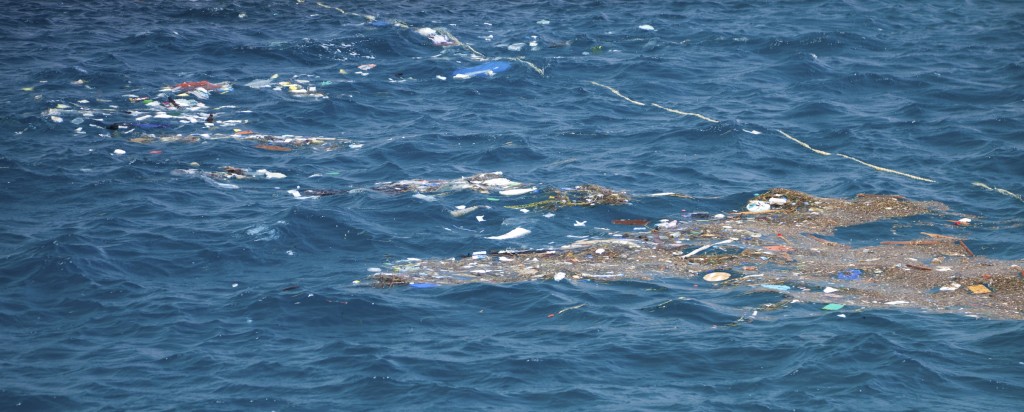
BY CHERYL HURD
Surfing conjures up images of free spirits, at one with the ocean, without a care in the world. But for Surf Lady Veronica Grey, it is the world she so desperately cares about.
About a year ago, the waves called to Grey. Although the California actress and filmmaker did not know at the time, the message they carried for her, that day would change her life. She lay belly down on her surfboard and paddled her way to depths beyond the breaking waves, where she would wait for the perfect ride. On this day, the rhythm of stroke meeting ocean was interrupted. She plunged her hand into the water, and then recoiled. Between her fingers dripped a slimy substance.
“I remember the first time I felt it. I was paddling out on my board and noticed a mushy, plastic-like substance sliding through my fingers. It was gross,” she recalled, “and that’s what started my obsession with the Great Pacific Garbage Patch.”
The patch is located between Hawaii and California in the northern Pacific Ocean, where millions of small bits of plastic have gathered in a vortex of ocean currents known as a gyre. There are five of these gyres in our oceans around the world. Grey said that 15 years ago the one in the Pacific was about the size of Texas, and now is estimated to be closer to the size of the United States.
“It’s sort of depressing facing what is really happening to our planet,” she said, explaining that an estimated 25 percent of our planet is now covered with trash.
Since the areas in the oceans where the trash collects are so remote, people tend to not think about it. “It’s a silent, deadly killer and the problem is very scary,” she continued.
Grey, who surfs about twice a week, said while currents and winds may collect the plastics in these gyres, the plastic has infiltrated every part of the ocean. She said scientists estimate there are 46,000 pieces of plastic in every square mile of ocean. She finds plastic around her each time she enters the water.
“I challenge anyone to go to their nearest shoreline and wade in about 5 feet with a jar, scoop up some water and see what you get.” She also points out that you don’t need to be near water to find discarded plastic. Step outside, or drive on the freeway—you’ll see bags floating in the air or hanging in trees; buckets and other plastic debris that has fallen from the backs of pickups; and straws, drink covers and water bottles.
Grey is urging everyone to stop using the plastic that we have grown accustomed to in our disposable society. She has created a documentary called “Aqua Seafoam Shame” to educate the public about the problem. The first investor to help her begin her informational campaign was Jim Holt, owner of ERUS Builders solar company in Scottsdale.
“When I met her,” Holt recalled, “I could see that her mission and her purpose were truthful and only beneficial. With my background in contracting I have watched mountains of waste being taken off the job sites. She has learned something and she’s giving it a voice. It struck a chord with me. The first day that I saw her video, I had a plastic water bottle on my desk. Watching her video made me immediately get a jar out of my cupboard and pour it into the glass jar. I made a commitment to myself and to our planet to make that change.”
Grey said when she does talk with people, they understand her concern and are quick to say they will change their plastic-using habits. But Grey points out that because many of the items we buy are packaged in plastic, she has focused her attention on businesses,— from giant corporations to local take-out restaurants—asking them to change their packaging habits.
She said that scientifically, progress is being made, but she hopes it’s not too late.
What you can do
Anytime you see plastic in your life, find an alternative. Use matches instead of a plastic lighter. Carry your own fork with you instead of using a throw-away. Get drinks in recyclable aluminum cans or glass bottles, or carry your own reusable refill bottle. Look for plastic bags that are compostable. Carry your own reusable bags to transport store bought items. Buy toys that are not made of plastic. Ask businesses you frequent to change their plastic packaging habits too. Never be adversarial, Grey says, just ask them to consider switching to recyclables or biodegradables.
To watch “Aqua Seafoam Shame” visit pacific-tv.blogspot.com





Thank you for the kind words! We hope you’ll help spread the word about us!